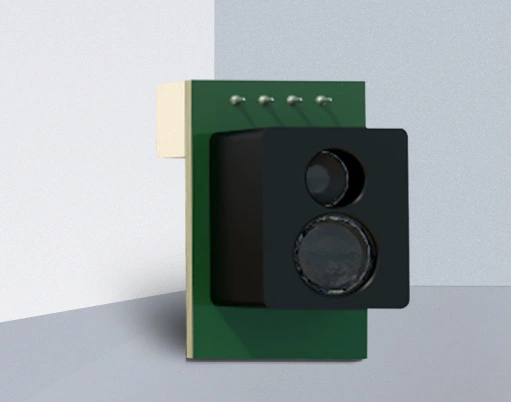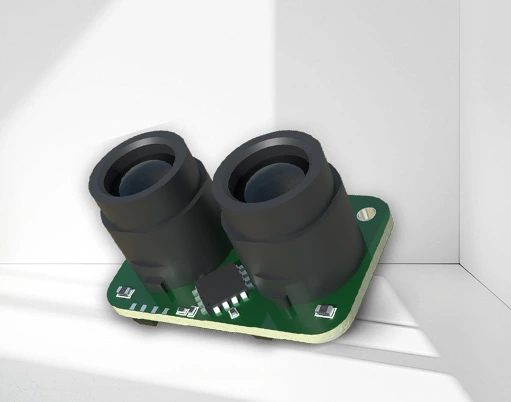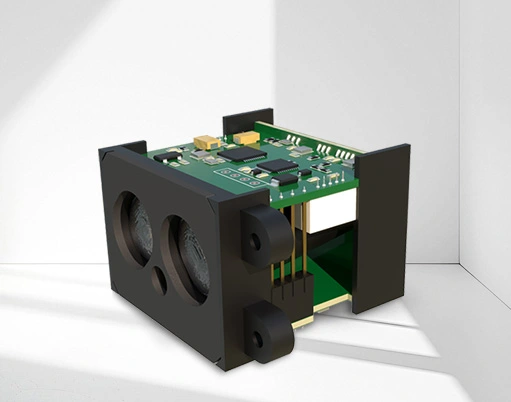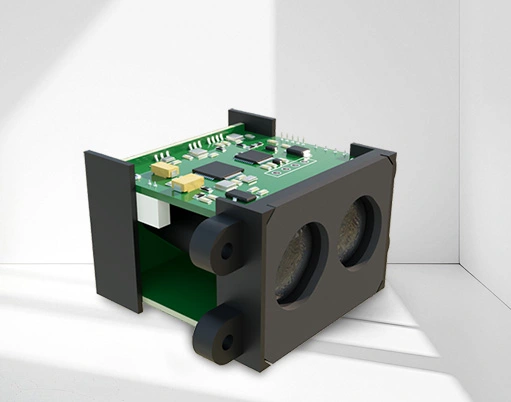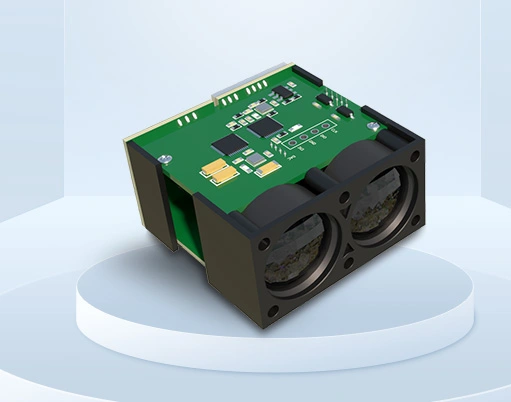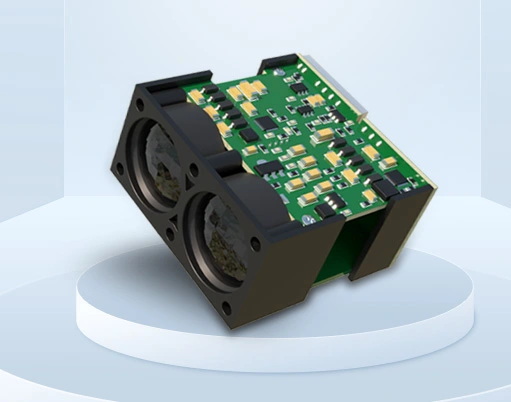
Laser ranging sensors have become a key technical equipment for improving stacking efficiency and ensuring operational safety in port container stacking scenarios due to their high precision, strong anti-interference ability, and fast response speed. Its application mainly revolves around the positioning, recognition, stacking accuracy control, and safety monitoring of containers. The following are specific application details:
1、 Core application scenarios and functions
1. Positioning and alignment of container lifting equipment
demandPort gantry cranes, shore cranes, and other equipment need to accurately align container corner pieces (lifting points) or stacking layers when grabbing or stacking containers to avoid collisions or misalignment.
Function of laser sensor:
Install laser distance sensors on the top or side of the lifting device to measure the distance between the lifting device and the top or side of the container in real time, and calculate the relative positional deviation (horizontal/vertical direction) between the lifting device and the target container.
Combined with the control system, automatically adjust the position of the lifting equipment to achieve "one click alignment", reduce manual operation errors, and improve lifting efficiency (especially during harsh weather or nighttime operations).
2. Monitoring of stacking height and interlayer spacing
demandContainers need to be stacked at a fixed height (usually about 2.9 meters per layer), and super high-rise stacking (such as 6-8 layers) requires strict control of verticality and interlayer spacing to avoid tipping.
Function of laser sensor:
Install laser sensors on the columns or beams of the stacker crane, measure the distance downwards from the top surface of the container below, and provide real-time feedback on the current stacking height to ensure consistency in the stacking height of each layer.
Side mounted sensors can monitor the horizontal spacing between adjacent containers, avoiding excessive gaps or compression caused by skewness.
3. Empty/Heavy Container Identification and Status Detection
demandPorts need to distinguish between empty containers (weighing approximately 2-5 tons) and heavy containers (weighing up to 30 tons), and inspect the boxes for deformation or damage (such as protruding doors or sunken sides).
Function of laser sensor:
Measure the distance distribution on the surface of the container using multiple sets of laser sensors (such as 1-2 installed on each side and top of the container): Empty containers are lighter in weight, making it easier for the container to maintain standard dimensions; Heavy containers may experience slight deformation due to cargo compression, and sensors can detect distance anomalies (such as a deviation of more than 5cm from the standard value at a certain point).
Based on the preset standard size model (such as a 20 foot box with a length of 6.058 meters and a width of 2.438 meters), through multi-point distance data comparison, quickly identify whether the box meets the stacking standards.
4. Stacking area boundary and obstacle detection
demandDuring operation, the stacker crane must strictly move within the designated area to avoid colliding with other stacks, equipment, or personnel.
Function of laser sensor:
Install laser sensors on both sides of the stacker crane's travel route to scan for obstacles in front of and on both sides (such as abandoned goods, sudden intruders). When the distance is less than the safety threshold (such as 3 meters), an alarm will be triggered and the crane will automatically slow down or stop.
The top sensor can monitor the space restrictions above the stacking area (such as warehouse height, high-voltage lines) to prevent stacking from exceeding the height limit.
2、 Technical selection and advantages
1. Sensor type selection
Time of Flight (ToF) methodSuitable for medium to long distance measurement (5-50 meters), such as stack height, vertical distance between lifting equipment and containers, with strong resistance to dust and rainwater interference, suitable for outdoor or semi outdoor environments in ports.
triangulationSuitable for short distance high-precision detection (0.5-5 meters), such as deformation detection of the box surface (accuracy up to ± 1mm), it is necessary to ensure that the box surface has a certain reflectivity (can be matched with auxiliary light sources).
Multi sensor networkingUsually, a monitoring system consisting of 4-8 sensors is used to cover the three-dimensional spatial data of the container, and the positioning accuracy is improved through data fusion (such as error control within ± 3mm).
2. Advantages compared to traditional methods
Efficiency improvementReplacing manual visual inspection or infrared ranging, the alignment time has been shortened from 30 seconds to 5-10 seconds, and the stacking efficiency has been improved by more than 40%.
Security enhancementReal time monitoring of obstacles to reduce collision accidents; High precision interlayer spacing control reduces the risk of high-level stack tipping.
Strong adaptabilityIt can work stably in complex environments such as rain, fog, and dust in ports (some sensors support IP67 protection level), and is not affected by changes in lighting (laser wavelength is mostly 905nm, avoiding visible light interference).
3、 Practical application cases
Shanghai Yangshan Port Automated TerminalInstall laser ranging sensors on unmanned container stackers, combined with visual recognition systems, to achieve fully automated stacking, reducing single box processing time to 2 minutes, stacking height up to 8 layers, and error control within ± 5mm.
Port Authority of Singapore (PSA)Multiple sets of laser sensors are used to monitor the verticality of container stacks. When the tilt angle exceeds 0.5 °, an automatic alarm is triggered, and with the assistance of a robotic arm adjustment, the risk of collapse caused by external forces such as typhoons is reduced.
4、 Future Development Trends
Fusion with LiDARUsing 3D LiDAR instead of single point laser sensors to obtain 3D point cloud data of containers in one go, achieving more efficient size detection and positioning.
AI algorithm optimizationBy using machine learning models to analyze laser ranging data, automatic identification of box deformation types (such as dents and bulges) can be achieved, and stacking stability can be predicted (such as determining whether there is a risk of tipping based on interlayer deviation).
Laser ranging sensors provide a "digital eye" for port container stacking through precise distance measurement, which is one of the core technologies for port automation and intelligent upgrading, significantly improving operational efficiency and safety.

























